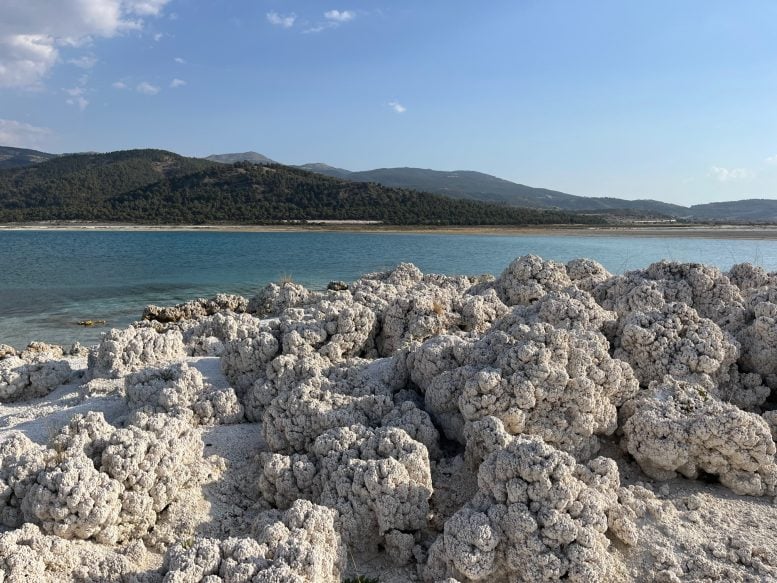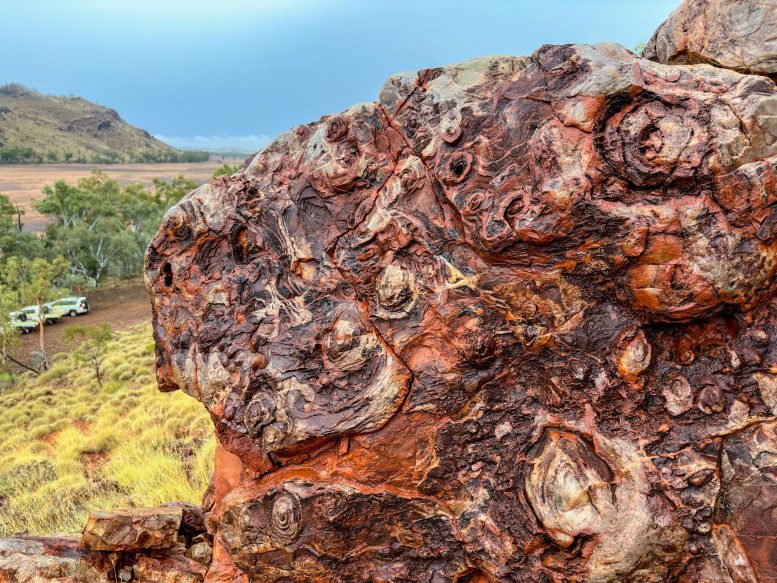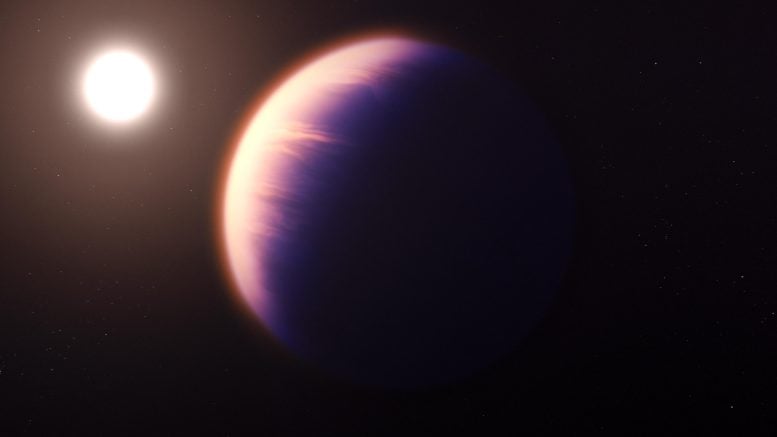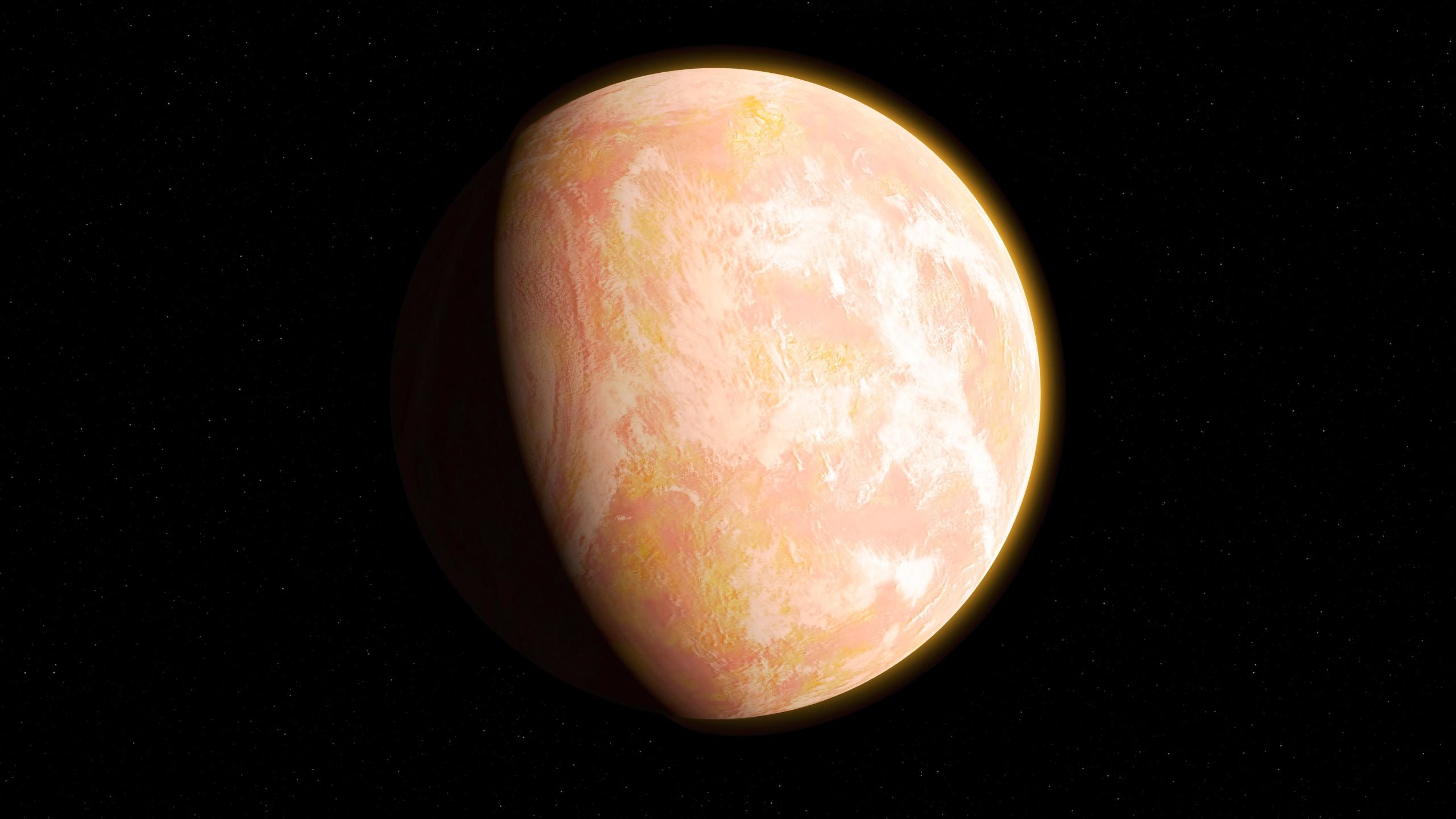An artist interpretation of the hazy atmosphere of Archean Earth – a pale orange dot. Credit: NASA’s Goddard Space Flight Center/Francis Reddy
Scientists review the extensive influence of microorganisms on Earth’s history, tracing their impact through isotopic and genetic evidence.
The study highlights the connection between microbial activity and major environmental shifts, such as oxygen levels, which are crucial for understanding Earth’s evolution and assessing extraterrestrial habitability.

Rocks along the shoreline of Lake Salda in Turkey were formed over time by microbes that trap minerals in the water. These microbialites were once a major form of life on Earth. Credit: NASA/JPL-Caltech
In order to study ancient microbes on Earth, astrobiologists look for isotopic fingerprints in rocks that can be used to identify the metabolisms of ancient communities. Metabolism refers to the conversion of food into energy, and happens in all living things. Many elements (think carbon (C), nitrogen (N), Sulfur (S), iron (Fe)) are involved in microbial metabolism. As microbes process these elements, they cause isotopic changes that scientists can spot in the rock record. Microbes also help to control how these elements are deposited and cycled in the environment, affecting geology and chemistry at both local and global scales (consider the role of microbes in the carbon cycle on Earth today).
Genetic and Geological Insights
Another way to study ancient microbial life is to look back along the evolutionary information contained in the genetics of life today. Combining this genetic information from molecular biology with geobiological information from the rock record can help astrobiologists understand the connections between the shared evolution of the early Earth and early life.
For an example of geological evidence of microbial metabolism, we can consider the formation of banded iron formations (BIFs) on the ancient seafloor. These colorful layers of alternating iron- and silicon-rich sediment were formed from 3.8 billion to 1.8 billion years ago and are associated with some of the oldest rock formations on Earth. The red colors they exhibit are from their high iron content, showing us that the ocean of Earth was rich in iron during the 2 billion years in which these rocks were forming.

Many microbial structures on the shores of Lake Salda in Turkey are exposed as water levels drop, allowing scientists to study relationships between life and the surrounding environment. Credit: Tim Lyons/UCR
In the new study, the team of researchers provides a review of current knowledge, gleaning information into the early metabolisms used by microbial life, the timing of when these metabolisms evolved, and how these processes are linked to major chemical and physical changes on Earth, such as the oxygenation of the oceans and atmosphere.
Evolution and Oxygenation Effects
Over time, the prevalence of oxygen on Earth has varied dramatically, in the ocean, in the atmosphere, and on land. These changes impacted both the evolution of the biosphere and the environment. For instance, as the activity of photosynthetic organisms raised oxygen levels in the atmosphere, creating new environments for microbial life to inhabit. Different nutrients were made accessible to life to fuel growth. At the same time, microbes that couldn’t survive in the presence of oxygen had to adapt, perish, or find a way to survive in environments where oxygen didn’t persist, such as deep in the Earth’s subsurface.

Photograph of a fossilized stromatolite in Australia. These ancient structures resulted from the activity of microorganisms that lived in layered, mat-like colonies. Credit: NASA/Mike Toillion
The new study explains our understanding of how oxygen levels have changed over time and spatial scales. The authors map different types of microbial metabolism, such as 
This is an illustration of exoplanet WASP-39 b, also known as Bocaprins. NASA’s James Webb Space Telescope provided the most detailed analysis of an exoplanet atmosphere ever with WASP-39 b analysis released in November 2022. Webb’s Near-Infrared Spectrograph (NIRSpec) showed unambiguous evidence for carbon dioxide in the atmosphere, while previous observations from NASA’s Hubble and Spitzer Space Telescopes, as well as other telescopes, indicate the presence of water vapor, sodium, and potassium. The planet probably has clouds and some form of weather, but it may not have atmospheric bands like those of Jupiter and Saturn. This illustration is based on indirect transit observations from Webb as well as other space and ground-based telescopes. Webb has not captured a direct image of this planet. Credit: NASA, ESA, CSA, Joseph Olmsted (STScI)
Conclusion and Implications for Extraterrestrial Life
According to the authors, “The history of microbial life marched in step with the history of the oceans, land and atmosphere, and our understanding remains limited by how much we still do not know about the environments of the early Earth.”
The study also has wider implications in the search for life beyond Earth. Understanding the co-evolution of life and the environment can help scientists better understand the conditions necessary for a planet to be habitable. The interconnections between life and the environment also provide important clues in the search for biosignature gases in the atmospheres of planets that orbit distant stars.
For more on this research, see New Insights Into Earth’s First Organisms Could Change How We Search for Extraterrestrial Life.
Reference: “Co‐evolution of early Earth environments and microbial life” by Timothy W. Lyons, Christopher J. Tino, Gregory P. Fournier, Rika E. Anderson, William D. Leavitt, Kurt O. Konhauser and Eva E. Stüeken, 29 May 2024, Nature Reviews Microbiology.
DOI: 10.1038/s41579-024-01044-y














/https://tf-cmsv2-smithsonianmag-media.s3.amazonaws.com/filer_public/d1/82/d18228f6-d319-4525-bb18-78b829f0791f/mammalevolution_web.jpg)






Discussion about this post